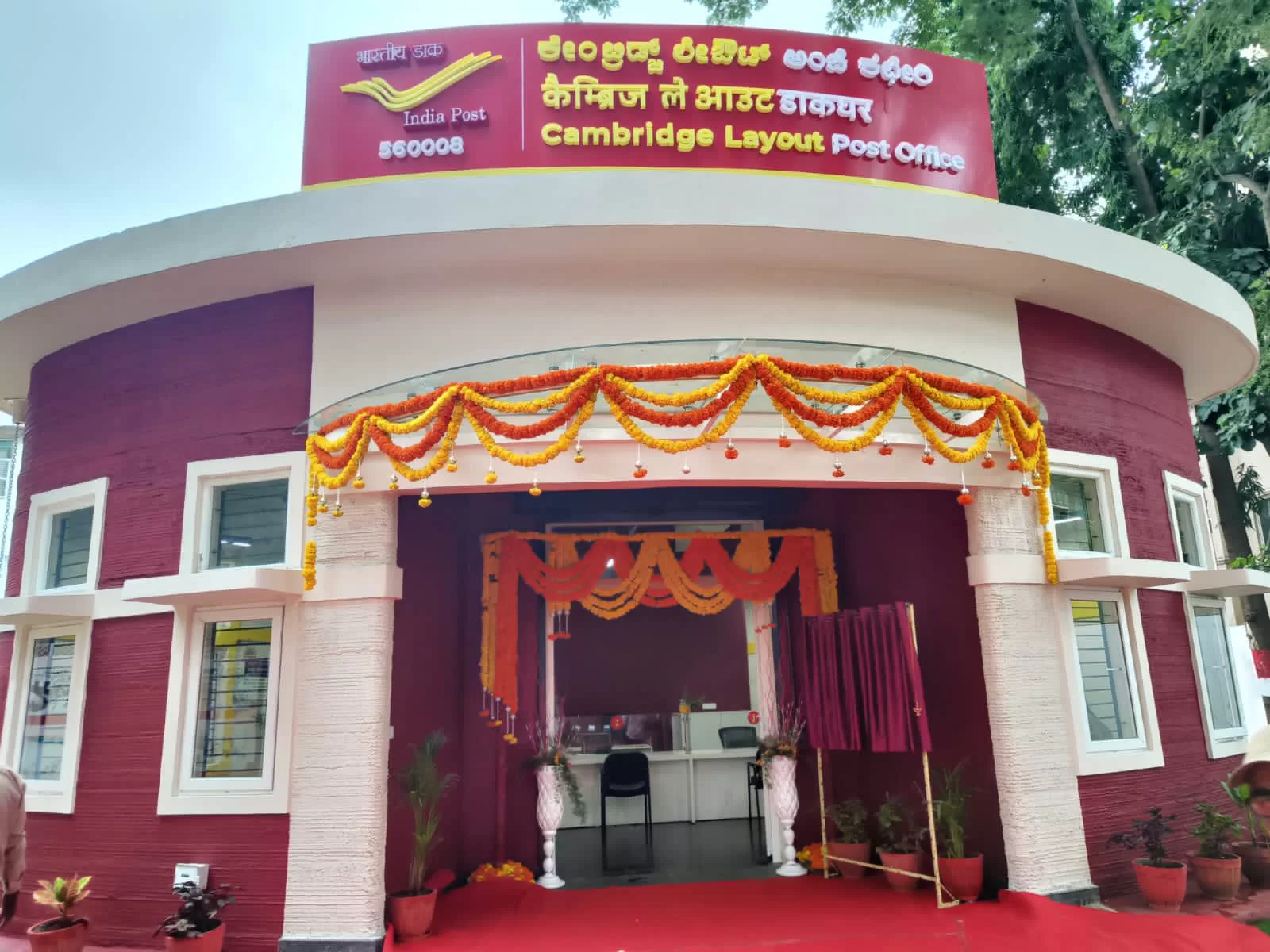On Friday, Ashwini Vaishnaw, the Union Minister for Railways, Communications, Electronics, and IT, officially inaugurated India’s inaugural 3D-printed post office situated in Cambridge Layout, Bengaluru. The virtual inauguration took place from the premises of the General Post Office building. Remarkably, the post office was completed in an impressive 43 days, surpassing its deadline by two days. The construction was managed by Larsen & Toubro Limited, with vital technological support from IIT Madras, under the expert guidance of Professor Manu Santhanam from the Building Technology and Construction Management Division of the Department of Civil Engineering.
Minister Vaishnaw remarked that Bengaluru consistently showcases a progressive image of India. The unveiling of this 3D-printed post office exemplifies the current spirit of India’s advancement and growth, as noted by the minister.

Spanning across a built-up expanse of 1,021 square feet, the post office’s construction harnessed the capabilities of 3D concrete printing technology. This innovative method of automated building construction employs a robotic printer to meticulously layer concrete in accordance with the approved design. The process utilizes a specially formulated concrete with rapid-setting properties to ensure strong cohesion between the layers during the printing process. George Abraham, overseeing operations for L&T in the southern and eastern regions, elucidated that the involvement of robotic intervention, incorporating pre-embedded designs, facilitated the impressive feat of completing the entire construction endeavor in a mere 43 days. This stands in stark contrast to the conventional approach that would typically demand 6 to 8 months for similar projects.
Additionally, the construction of the post office was achieved at a cost of Rs 23 lakh, which translates to a notable reduction of 30-40 percent in comparison to the expenses incurred through traditional construction methods.
Expounding on the essential prerequisites of concrete 3D printing, Professor Santhanam elaborated, “The project is predominantly centered around domestically developed machinery and robots, which are poised for further expansion in the upcoming phases. The distinctive concrete material utilized in this initiative boasts qualities such as pumpability, extrudability, and buildability, all while exhibiting robust mechanical properties.”
The collaboration between IIT Madras and L&T was marked by several deliberations leading up to the commencement of the post office’s construction. Professor Ravindra Gettu from IIT-M played a pivotal role as a principal advisor, overseeing the alignment of the proposed 3D printing technology with conventional construction methodologies. He was also tasked with evaluating the comprehensive techno-commercial proposal put forth by L&T.
The collaboration at IIT Madras involved the active participation of professors Meher Prasad and Pradeep Pratapa, who assumed responsibility for overseeing crucial aspects. This encompassed the meticulous evaluation of materials and structural design, formulation of the construction methodology and schedule, and the endorsement of design and construction concepts. Furthermore, Professor Gettu conducted a total of six site visits to thoroughly assess on-site quality and extend guidance concerning critical matters like curing techniques and other technical intricacies, as elucidated by Professor Santhanam.
Santhanam further emphasized that the project achieved a seamless continuity by eliminating vertical joints, entailing the uninterrupted 3D printing of the entire perimeter. Notably, the imported 3D printing technology from Denmark, which was employed for this post office endeavor, exhibited a remarkable flexibility to accommodate curved surfaces and adapt to diverse site dimensions. This technology showcased its versatility by not confining itself to planar walls and permitted the incorporation of innovative design elements.
The 3D printing technology also facilitated the creation of continuous reinforced concrete footing and three-layer walls. The exterior layers were composed of printed concrete, while the central layer featured reinforced concrete. The end result was a construction timeline that was substantially reduced to just 43 days, significantly shorter compared to conventional construction methods and boasting reduced material wastage.
Developers of the project underscored 3D printing’s unique selling point, which lies in its capacity to enable tailored customization of structures. This adaptability holds immense potential in the realm of housing-related construction. Additionally, 3D printing empowers the integration of weather-resistant features and utilities directly within the walls, thereby enhancing construction efficiency. As a consequence, this technology opens doors for delivering quality housing solutions even in challenging terrains.

Rajendra Kumar, the Chief Postmaster General of Karnataka Circle, went on to highlight a larger vision that revolves around the potential utilization of 3D printing technology in the domain of housing. Kumar articulated, “Our primary focus is on establishing post offices with cost-effective construction alternatives through the application of 3D printing technology. We perceive this technology as a beacon for the future, potentially igniting interest in economical housing solutions, which constitutes our secondary objective.” He outlined plans to construct post offices on approximately 400 vacant sites across the state, thereby extending postal services to previously inaccessible areas. However, the implementation of these plans hinges on the submission of a comprehensive report detailing the outcomes and insights derived from the inaugural 3D-printed post office project.


